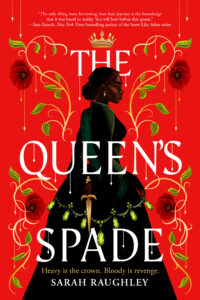“Connecting the Past and the Present for Students”
How do you teach your students about Sarah Forbes Bonetta?
Well, that’s a tricky question. First of all, who the heck is Sarah and what does she have to do with North American students in the 21st century? Making that link, I think, is key to helping students understand why learning about buried Black histories matters to us today.
Sarah Forbes Bonetta was actually originally named Omoba Ina (though some literature spells her last name as Aina). She was an African Princess, heir of the Egbado Clan, part of the Yoruba Tribe which can be found in present-day Nigeria. After being kidnapped by the Dahomey, a neighboring African Kingdom, she was taken by an English military man Captain Forbes as part of an exchange with Dahomey’s King. Sailing across the Atlantic Ocean on his ship, the HMS Bonetta, she was then presented to Queen Victoria as a ‘gift.’ She was whimsically renamed Sarah Forbes Bonetta, ‘Forbes’ after the Captain who took her from Africa and ‘Bonetta’ after his ship. Queen Victoria made Sarah her goddaughter and thus began Sarah’s new life in England as proof of the Queen and by extension Britain’s benevolence across the world.
By the age of eight, Ina went from princess to kidnaped to gift to a propaganda tool. For all the press and hoopla she got in England for being an African princess in England, Sarah Forbes Bonetta’s actual life was quickly forgotten or rather erased, after she married at age 19 and moved back to Africa. What happened to being the goddaughter of a European Queen? What happened to symbolizing Europe’s hopes for the civilization of so-called ‘savages’ of the world?
I think the racism underlying this very sentiment can offer us a clue. Ina was a vessel for other people’s interests, but never quite allowed to be herself. Archives of letters are the only clues we have as to how Sarah truly felt about her predicament – the violent disruptions in her life, the removal from her home, and her forced assimilation into a British culture that didn’t truly care for her or respect her. And although she did seem to care for the Queen – she named her first daughter after Queen Victoria after all – we’ll never know just how deep the psychological costs of Britain’s actions ran. My book, The Queen’s Spade, tries to answer this. Are you really accepted by a group of people if their love for you is conditional upon you behaving exactly as they need you to for their own purposes? Are you really accepted if even after dancing to their tune they dismiss and erase you so easily as if you never mattered to begin with?
There are many such students who may feel like they have to pretend to belong. They know how much it hurts. The personal is often a gateway through which we can understand the historical, the social, and the political. Learning and teaching Ina’s story in a way that takes seriously her inner self may be exactly the way to make her story legible and relatable to people of today and get them thinking of not only the politics of 19th century Britain but how it’s not so different from the politics of today.
Published January 14th, 2025 by HarperCollins
About the Book: In this riveting historical thriller that’s loosely inspired by true life events, The Count of Monte Cristo meets Bridgerton as revenge, romance, and twisted secrets take center stage in Victorian England’s royal court when Sally, a kidnapped African princess and goddaughter to Queen Victoria, plots her way to take down the monarchy that stole her from her homeland.
A young lady can take only so many injuries before humiliation and insult forge a vow of revenge . . .
The year is 1862, and murderous desires are simmering in England. Nineteen-year-old Sarah Bonetta Forbes (Sally), once a princess of the Egbado Clan, desires one thing above all else: revenge against the British Crown and its system of colonial “humanitarianism,” which stole her dignity and transformed her into royal property. From military men to political leaders, she’s vowed to ruin all who’ve had a hand in her afflictions. The top of her list? Her godmother, Britain’s mighty monarch, Queen Victoria herself.
Taking down the Crown means entering into a twisted game of court politics and manipulating the Queen’s inner circle—even if that means aligning with a dangerous yet alluring crime lord in London’s underworld and exploiting the affections of Queen Victoria’s own son, Prince Albert, as a means to an end. But when Queen Victoria begins to suspect Sally’s true intentions, she plays the only card in Victorian society that could possibly cage Sally once again: marriage. Because if there’s one thing Sally desires more than revenge, it’s her freedom. With time running out and her wedding day looming, Sally’s vengeful game of cat and mouse turns deadly as she’s faced with the striking revelation that that the price for vengeance isn’t just paid in blood. It means sacrificing your heart.
Loosely inspired by the true story of Sarah Forbes Bonetta, Queen Victoria’s African goddaughter, The Queen’s Spade is a lush and riveting historical thriller perfect for fans of A Dowry of Blood and Grave Mercy.
About the Author: Sarah Raughley is the Nigerian-Canadian author of the Effigies series and the Bones of Ruin trilogy. An AuroraAward finalist, Raughley is also an English pro-fessor and public intellectual who has written for journals such as the Walrus, CBC, and Teen Vogue. Her creative work is inspired by a messy confluence of experiences, from being a huge fan girl blerd to being a postcolonial researcher and academic. You can find out more about her work at sarahraughley.com.
Thank you, Sarah, for this candid look at how the past truly inspires the present!



I hadn’t heard of this book, but I’m definitely fascinated now that I know the history behind it. I will have to check it out!